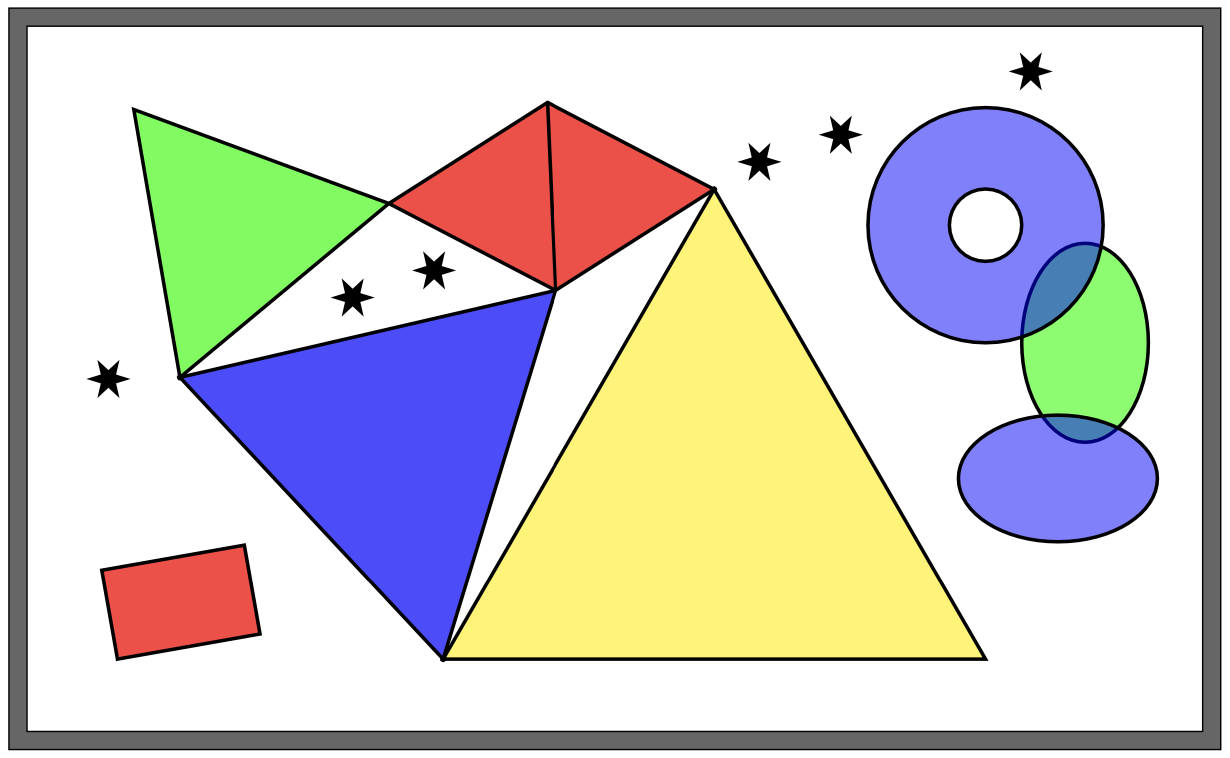
© Friederike Hofmann, MATH+
Author: Cor Hurkens (TU Eindhoven)
Project: 4TU.AMI
Challenge
The Grinch offers a painting with the title Solar Eclipse Number 8 for sale, which (according to the Grinch) might possibly be the work of Wassily Wassilyevich Kandinsky:

The authenticity-check-elf Austin has carefully examined the painting and has come to the following conclusions:
- The yellow, the blue, the green and the two red triangles in the painting are equilateral; all angles in these triangles are 60°.
- The center points of the six little black stars lie on a common straight line.
- The red quadrilateral in the lower left corner of the painting is a rectangle. The third digit behind the decimal point in the decimal representation of the area of this rectangle (measured in square meters) is 4.
- The green and the blue ellipses at the right margin of the painting are congruent.
- The two red triangles are congruent and each have an area of 4/3 square meters.
- The areas of the yellow and the green triangles add up to an even integer number of square meters.
We would like to know: what is the third digit behind the decimal point in the decimal representation of the area of the blue triangle (measured in square meters)?
Note: You may read of the diagramm (i.e. the painting) which points belong to more than one triangle. For example, the green and blue traingle share a vertex, and the red triangles share an edge.
Possible answers:
- The third digit behind the decimal point is 1.
- The third digit behind the decimal point is 2.
- The third digit behind the decimal point is 3.
- The third digit behind the decimal point is 4.
- The third digit behind the decimal point is 5.
- The third digit behind the decimal point is 6.
- The third digit behind the decimal point is 7.
- The third digit behind the decimal point is 8.
- The third digit behind the decimal point is 9.
- There is not enough information in the problem statement that would allow to uniquely determine this third digit behind the decimal point.